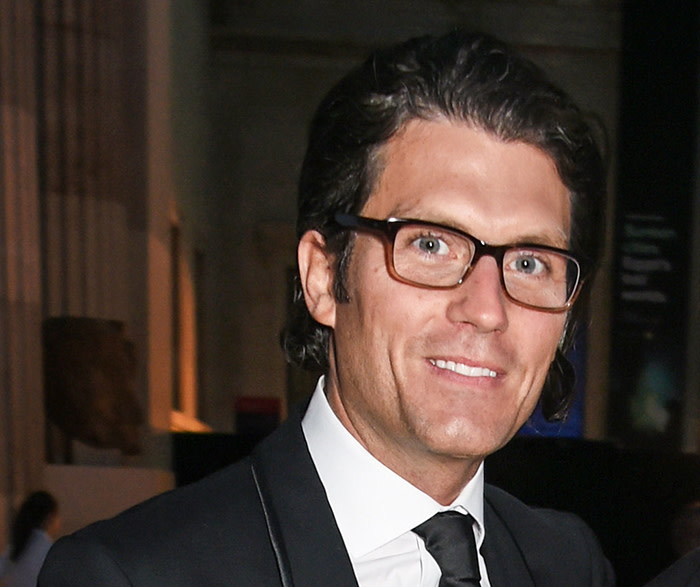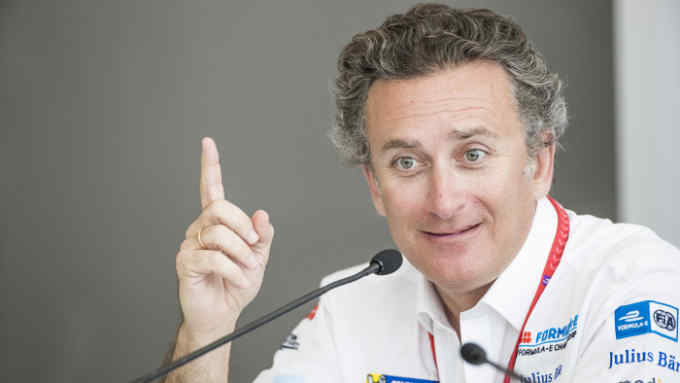How ABB FIA Formula E championship built a fan base from scratch

Roula Khalaf, Editor of the FT, selects her favourite stories in this weekly newsletter.
Traditional motorsport fans were not particularly captivated when Formula E, an all-electric racing series, launched in 2014. Even its chief marketing officer Jérôme Hiquet acknowledges that diehard fans were dismissive of the new series, especially when it was compared with Formula One.
Now in its fifth series, the ABB FIA Formula E championship has succeeded in mobilising an audience and public profile that has delighted sponsors and backers, not least in connecting with a younger, urban audience.
Nearly half (49 per cent) of engagement on the series’ Facebook page is from people in the 13-17 and 18-24 age brackets, according to figures from Formula E. The company says that the 18-24 category is their second largest “follower group” on the social network, after the 25-34 year-olds.
The electric series gives its F1 elders a lesson in how to mobilise social media, e-gaming and a range of communication platforms to build a young fan base from scratch.
Interaction is key, says Mr Hiquet. “It is a younger audience than for other motorsport series, and they consume content not only through traditional channels, but through social media and short-format content.”
The Formula E team invests in providing fans with just that. “We have a full team of community managers at the track commenting on almost everything that is happening before and during the race on social media, capturing content that is interesting in real time.” This includes live tweeting races and sharing images on social media channels for fans to use as background pictures on their mobile phones.
Formula E has also developed a number of ways to enable fans to interact with the sport. “Ghost racing” will place fans in the middle of the action in real time, while with “Fanboost” supporters can directly affect the outcome of a race (see panel below for explanations). “Attack Mode” — a new addition this series — increases the element of surprise and makes for even more unpredictable racing.
Guide: Three tools to engage fans

Live ghost racing: Soon to launch, ghost racing will see fans take part in the race in real time through an e-game. It will be made available through a free app. Currently fans can compete in e-races on simulators at the track.
Fanboost: Enables supporters to give their favourite drivers a five-second power boost during the second half of the race. Fans vote for the drivers online, on the Formula E app or using Twitter.
Attack Mode: Drivers unlock a short power boost by driving off the racing line — ie the fastest route around the track — through an “activation zone”. Organisers decide the settings of the mode an hour before the race, so teams don’t have long to set their game plan.
That racing style provides a spectacle for even the most traditional motorsport fans, according to Mr Hiquet. He acknowledges that the introduction of the second-generation car has been critical to the popularity of the sport.
The new car is more powerful than its predecessor, with a top speed of around 280kph, and improved battery life. Before its introduction, drivers had to switch vehicles mid-race, which interrupted the momentum and served as an uncomfortable reminder of the limitations of electric technology.
It is this showcasing of green technology that sets Formula E apart among its younger fans, according to Mr Hiquet. The sport is more than a racing series, he says, as it embodies a serious social purpose by showing how technology can tackle global problems such as climate change and air pollution.
“Studies tell us that the younger demographic want to be connected with brands that convey an authentic purpose and mission,” he says. “Formula E has done a good job of putting that at its core from the very beginning.”

It is also a message that resonates with commercial backers. Marco Parroni, head of global sponsorship at wealth manager Julius Baer, official global partner to the championship, says: “Formula E is not just a car race, it is a race with a purpose: to create enthusiasm for electric mobility, to promote research and development.”
The series has a final trick up its sleeve for attracting fans: its city-centre locations. “It enables us to get potentially closer to people who may be attracted to come to a race in a way that they would attend an NBA or a football game,” says Mr Hiquet. Fans can get to events on foot or by public transport, unlike F1, for example, where many races are in more remote locations.
The city-centre tracks make the races and surrounding events more accessible, introducing the sport to people who may not have considered buying tickets, but might do so in the future.
This urban focus is popular with partners including title sponsor ABB, the Swiss engineering group, a leader in electric vehicle charging infrastructure. Nicolas Ziegler, head of markets, brand and events, says the championship is a good fit because “e-mobility is at the core of what we are doing”. His company is “highly engaged” with smart city and smart infrastructure development, he adds.
This mix of new technology, social media and gaming is capturing the affection of the next generation of motorsport fans — and taking significant commercial interest with it.
Sponsors: Social aspect has commercial appeal

Alongside the challenge of building its young fan base, Formula E also needs to attract big-name sponsors: Virgin, Panasonic and Shell, for example, are all supporting teams this season.
Argo Group, a global underwriter of speciality insurance, has been involved in Formula E since 2016, first sponsoring the now-defunct Team Aguri and now with Dragon Racing.
“The . . . appeal, first and foremost, is the association with the innovation, teamwork and sustainability,” says Gary Grose, Argo Group’s global marketing and communications leader. “Those are the pillars that we want our brand associated with, so we’ve tagged to those sports that we feel are cutting edge in those areas.”
If branding is important, it is the business opportunities that are crucial — and the access sponsors gain attracts Argo.
The championship’s VIP area, the Emotion Club, is an open space that allows teams and sponsors to network among themselves and with each other. This contrasts with Formula One’s teams’ hospitality suites, which are run as private units, separate from their garage and the other teams.
This access does not just make for good client entertainment, it also gives Argo regular contact with Dragon’s founder and principal, Jay Penske (pictured), of the renowned American racing family.
As well as his racing interests, Penske is chairman and chief executive of the Penske Media Corporation, the parent company of more than 20 print and digital brands including Variety, Rolling Stone, Indiewire and WWD.
Access to Mr Penske and his “brand power” is one aspect that pulls in sponsors. “You’re dealing with Jay Penske’s media empire which really helps push our brand out as part of the deal,” says Mr Grose.
Kate Walker

Comments